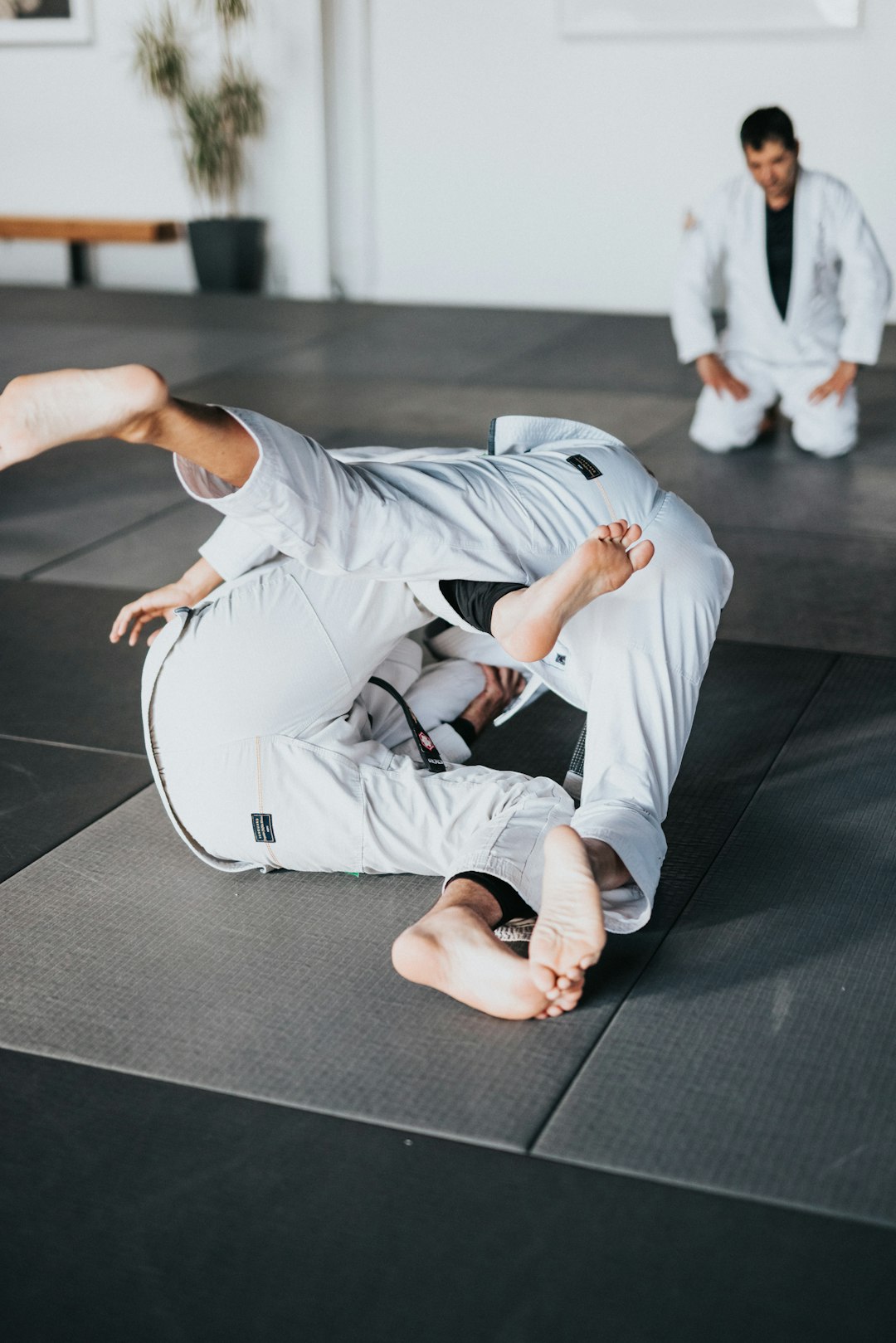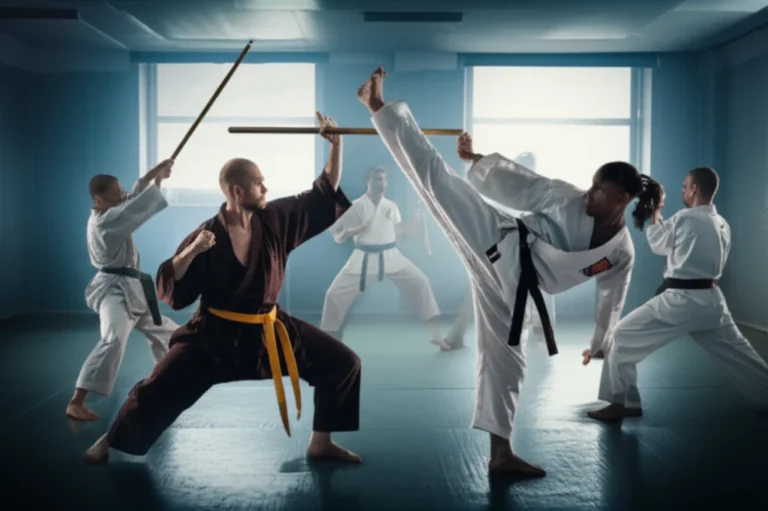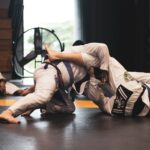Support our educational content for free when you purchase through links on our site. Learn more
Discover the Top 10 UFC Fighting Styles That Will Blow Your Mind! 🥋
Are you ready to dive into the electrifying world of UFC fighting styles? If you’ve ever watched a fight and wondered what makes each fighter tick, you’re in for a treat! In this article, we’ll explore the top 10 fighting styles that dominate the Octagon, revealing the secrets behind the techniques that leave fans on the edge of their seats. From the powerful strikes of Muay Thai to the intricate submissions of Brazilian Jiu-Jitsu, each style offers a unique flavor that contributes to the thrilling spectacle of mixed martial arts.
But here’s the kicker: understanding these styles not only enhances your appreciation of the sport but also gives you insights into how fighters strategize and adapt in the heat of battle. Did you know that many champions today are not just specialists but rather hybrid fighters, blending multiple disciplines to create a unique fighting style? This evolution has transformed the UFC into a chess match of combat, where every move counts. So, buckle up as we break down each style and discover what makes them effective!
Key Takeaways
- Diverse Fighting Styles: The UFC features a rich variety of fighting styles, including striking arts like boxing and Muay Thai, and grappling techniques like Brazilian Jiu-Jitsu and wrestling.
- Evolution of Fighters: Today’s champions are often hybrids, combining multiple styles to maximize their effectiveness in the Octagon.
- Methods of Victory: Fighters can win through knockouts, submissions, or judges’ decisions, showcasing the importance of strategy and skill.
- Weight Classes Matter: Understanding the different weight classes is crucial for appreciating matchups and fighter dynamics.
Ready to gear up for your next fight night? 👉 Shop UFC Gear on: Amazon | Walmart | UFC Official Store and get your fan essentials today!
Table of Contents
- Quick Tips and Facts
- The Evolution of UFC Fighting Styles
- What is MMA? Understanding Mixed Martial Arts
- Top 10 UFC Fighting Styles You Need to Know
- Striking Arts: Boxing and Muay Thai
- Grappling Techniques: Brazilian Jiu-Jitsu
- Wrestling: The Backbone of MMA
- Karate: The Art of Precision
- Taekwondo: Kicking it Up a Notch
- Kickboxing: The Fusion of Styles
- Sambo: The Russian Influence
- Judo: The Art of Throwing
- Krav Maga: Real-World Self-Defense
- Capoeira: The Dance of Combat
- How Fighters Choose Their Styles
- Methods of Victory in UFC Fights
- Essential Terms to Know in MMA
- Understanding MMA Weight Classes
- Unlock MORE of Your Inner Combat Sports Fan with UFC Fight Pass!
- Conclusion
- Recommended Links
- Reference Links
Quick Tips and Facts #quick-tips-and-facts
- MMA, short for Mixed Martial Arts, is a full-contact combat sport that allows a variety of fighting techniques, from striking and grappling to takedowns and submissions.
- The UFC, or Ultimate Fighting Championship, is the world’s leading MMA organization, known for its high-intensity bouts and skilled athletes.
- Fighters in the UFC come from diverse martial arts backgrounds, including Brazilian Jiu-Jitsu, Muay Thai, Wrestling, Boxing, and Judo, making each fight a unique clash of styles.
- Victory in the UFC can be achieved through knockout (KO), technical knockout (TKO), submission (SUB), or judges’ decision if the fight goes the distance.
- Understanding the different weight classes, rules, and judging criteria can significantly enhance your enjoyment of UFC fights.
The Evolution of UFC Fighting Styles #the-evolution-of-ufc-fighting-styles
The UFC’s early days were a wild west of combat, with fighters often specializing in a single discipline. We saw bruising boxers, lightning-fast karate experts, and jiu-jitsu wizards grappling for dominance. Remember Tank Abbott? Talk about a brawler! But as the sport matured, so did its athletes.
Today, the UFC demands versatility. Fighters like Georges St-Pierre and Jon Jones, considered some of the greatest of all time, achieved legendary status by mastering a blend of striking, grappling, and wrestling. They could knock you out on your feet or submit you on the ground, making them a nightmare matchup for any opponent.
This evolution has led to a fascinating dynamic where fighters are constantly adapting and adding new tools to their arsenals. It’s like a game of chess, where each fighter tries to outmaneuver and exploit their opponent’s weaknesses.
What is MMA? Understanding Mixed Martial Arts #what-is-mma-understanding-mixed-martial-arts
Mixed Martial Arts, or MMA as it’s more commonly known, is a full-contact combat sport that allows a wide variety of fighting techniques and skills from various martial arts disciplines. In simpler terms, it’s a melting pot of different fighting styles, where fighters can punch, kick, grapple, wrestle, and submit their opponents.
Think of it like this: if martial arts were ingredients, MMA would be the delicious dish you get when you combine them. You’ve got the striking power of boxing, the devastating kicks of Muay Thai, the grappling mastery of Brazilian Jiu-Jitsu, the takedown prowess of wrestling, and much more.
But MMA is not just about brute force. It’s a highly technical and strategic sport that requires immense skill, athleticism, and fight IQ. Fighters need to be well-rounded, able to adapt to different opponents and situations, and know when to strike, grapple, or go for a takedown.
Is UFC a Sport or Entertainment? 10 Key Insights to Explore! 🥋 2025
Top 10 UFC Fighting Styles You Need to Know #top-10-ufc-fighting-styles-you-need-to-know
Here at MMA Ninja™, we live and breathe combat sports. And while every fighter brings their own unique flair to the Octagon, understanding the core fighting styles is key to appreciating the nuances of this brutal ballet. So, let’s break down the top 10 UFC fighting styles that’ll have you analyzing fights like a seasoned pro!
1. Striking Arts: Boxing and Muay Thai #striking-arts-boxing-and-muay-thai
Boxing, the “sweet science,” is all about precision, footwork, and delivering those knockout punches. Think Muhammad Ali’s legendary jab or Mike Tyson’s ferocious hooks. In the UFC, boxers like Conor McGregor and Dustin Poirier have used their crisp boxing to dominate opponents.
Muay Thai, on the other hand, is known as the “art of eight limbs.” It utilizes punches, kicks, elbows, and knees, turning the entire body into a weapon. Muay Thai fighters like Saenchai and Buakaw Banchamek are renowned for their devastating strikes and clinch work. In the UFC, champions like Anderson Silva and Valentina Shevchenko have showcased the effectiveness of Muay Thai.
2. Grappling Techniques: Brazilian Jiu-Jitsu #grappling-techniques-brazilian-jiu-jitsu
Brazilian Jiu-Jitsu (BJJ), often called the “gentle art,” focuses on ground fighting and submissions. BJJ practitioners use leverage and technique to control and submit opponents, often through joint locks or chokes. The legendary Gracie family, pioneers of BJJ, proved its effectiveness in the early days of the UFC. Today, fighters like Charles Oliveira and Brian Ortega continue to demonstrate the dominance of BJJ.
3. Wrestling: The Backbone of MMA #wrestling-the-backbone-of-mma
Wrestling, with its emphasis on takedowns and control, is considered the backbone of MMA. Wrestlers are known for their relentless pressure, takedown defense, and ability to dictate where the fight takes place. UFC legends like Georges St-Pierre, Khabib Nurmagomedov, and Daniel Cormier all came from strong wrestling backgrounds, using their grappling skills to control and dominate opponents.
4. Karate: The Art of Precision #karate-the-art-of-precision
Karate, with its focus on powerful, linear strikes, has found a home in the UFC. Fighters like Lyoto Machida and Stephen Thompson have used their karate backgrounds to outmaneuver and outstrike opponents with lightning-fast kicks and punches.
5. Taekwondo: Kicking it Up a Notch #taekwondo-kicking-it-up-a-notch
Taekwondo, known for its dynamic kicking techniques, has produced some exciting UFC fighters. Athletes like Anthony Pettis and Edson Barboza have utilized their taekwondo backgrounds to deliver spectacular head kicks and spinning back kicks, electrifying audiences worldwide.
6. Kickboxing: The Fusion of Styles #kickboxing-the-fusion-of-styles
Kickboxing combines boxing punches with kicks from martial arts like karate and taekwondo. This versatile striking style has been adopted by many UFC fighters, including Israel Adesanya and Alex Pereira, who use their kickboxing skills to control distance and deliver powerful combinations.
7. Sambo: The Russian Influence #sambo-the-russian-influence
Sambo, a Russian martial art and combat sport, emphasizes wrestling, judo-style throws, and leg locks. It’s known for its effectiveness in both sport and self-defense situations. Former UFC lightweight champion Khabib Nurmagomedov, with his dominant grappling and ground-and-pound style, is a prime example of Sambo’s effectiveness in MMA.
8. Judo: The Art of Throwing #judo-the-art-of-throwing
Judo, meaning “gentle way,” focuses on throws, grappling, and submissions. Judokas are known for their ability to use an opponent’s momentum against them, executing throws and takedowns with impressive technique. Ronda Rousey, former UFC women’s bantamweight champion, used her Olympic-level judo skills to dominate opponents with her signature armbar submissions.
9. Krav Maga: Real-World Self-Defense #krav-maga-real-world-self-defense
Krav Maga, a military self-defense and fighting system developed in Israel, emphasizes real-world scenarios and brutal efficiency. While not as common in the UFC, some fighters have incorporated Krav Maga techniques into their arsenals.
10. Capoeira: The Dance of Combat #capoeira-the-dance-of-combat
Capoeira, a Brazilian art form that combines elements of martial arts, dance, and acrobatics, is known for its unpredictable movements and fluid kicks. While not as prevalent in the UFC, some fighters have incorporated Capoeira techniques into their fighting styles, adding an element of surprise and unorthodox attacks.
How Fighters Choose Their Styles #how-fighters-choose-their-styles
At MMA Ninja™, we often get asked how fighters choose their styles. It’s a fascinating process, often driven by a combination of factors:
- Natural Inclination: Some fighters are naturally drawn to striking, while others gravitate towards grappling. It’s like some people are born to dance, while others are born to paint.
- Early Exposure: The martial art a fighter learns first often lays the foundation for their style. It’s like learning a language – the first one you learn shapes how you understand language in general.
- Body Type: A fighter’s physique can influence their style. Tall, lanky fighters might excel at striking, while stockier fighters might gravitate towards wrestling and grappling.
- Training Environment: The gym a fighter trains at and the coaches they work with play a crucial role in shaping their skills and fighting philosophy. It’s like going to a university – the professors and the curriculum shape your understanding of a subject.
Methods of Victory in UFC Fights #methods-of-victory-in-ufc-fights
In the UFC, there are several ways to achieve victory, each more exciting than the last:
- Knockout (KO): The most spectacular finish, a knockout occurs when a fighter renders their opponent unconscious with a strike. Think of Conor McGregor’s lightning-fast knockout of Jose Aldo.
- Technical Knockout (TKO): A TKO occurs when the referee stops the fight because a fighter is no longer able to intelligently defend themselves, usually due to a barrage of strikes.
- Submission (SUB): This is where grappling arts like BJJ shine. A submission occurs when a fighter forces their opponent to tap out, either verbally or by tapping their hand on the mat, due to a joint lock or choke.
- Judges’ Decision: If a fight goes the distance, meaning all rounds are completed, the winner is determined by three judges who score the fight based on criteria such as effective striking, grappling, control, and aggression.
Essential Terms to Know in MMA #essential-terms-to-know-in-mma
To truly immerse yourself in the world of UFC and MMA, it’s helpful to familiarize yourself with some essential terms:
- Clinch: A close-quarters grappling position where fighters are pressed against each other, often vying for control or to deliver strikes.
- Takedown: When a fighter brings their opponent from a standing position to the ground.
- Ground and Pound: A dominant position where a fighter controls their opponent on the ground and delivers strikes.
- Guard: A ground fighting position where a fighter on their back uses their legs to control and potentially submit their opponent.
- Kimura: A type of shoulder lock often used in BJJ and MMA for submissions.
- Armbar: Another common BJJ submission that hyperextends the elbow joint.
- Rear-Naked Choke: A chokehold applied from behind an opponent, often leading to a technical submission.
- Guillotine Choke: A chokehold applied from the front, using the forearm to compress the opponent’s trachea.
Understanding MMA Weight Classes #understanding-mma-weight-classes
To ensure fair competition, the UFC, like other MMA organizations, divides fighters into weight classes:
Men’s Divisions:
- Flyweight: 125-pound limit
- Bantamweight: 135-pound limit
- Featherweight: 145-pound limit
- Lightweight: 155-pound limit
- Welterweight: 170-pound limit
- Middleweight: 185-pound limit
- Light Heavyweight: 205-pound limit
- Heavyweight: 265-pound limit
Women’s Divisions:
- Strawweight: 115-pound limit
- Flyweight: 125-pound limit
- Bantamweight: 135-pound limit
- Featherweight: 145-pound limit
Unlock MORE of Your Inner Combat Sports Fan with UFC Fight Pass! #unlock-more-of-your-inner-combat-sports-fan-with-ufc-fight-pass
Fighting is what we live for. And no one brings you MORE live fights, new shows, and events across multiple combat sports from around the world. With a never-ending supply of fighting in every discipline, there’s always something new to watch. Leave it to the world’s authority in MMA to bring you the Ultimate 24/7 platform for MORE combat sports, UFC Fight Pass!
Conclusion

In the dynamic world of UFC fighting styles, we’ve explored a rich tapestry of techniques and disciplines that shape the sport. From the explosive striking of Muay Thai and boxing to the intricate grappling of Brazilian Jiu-Jitsu and wrestling, each style brings its unique flavor to the Octagon.
Positives:
- The diversity of styles allows for thrilling matchups and unpredictable outcomes, keeping fans on the edge of their seats.
- Fighters today are more well-rounded than ever, often blending multiple styles to create a hybrid approach that maximizes their effectiveness.
Negatives:
- This complexity can sometimes make it challenging for new fans to understand the nuances of each style.
- The evolution of fighting styles means that fighters must constantly adapt and learn, which can be a daunting task.
Overall, we confidently recommend diving into the world of UFC fighting styles. Whether you’re a seasoned fan or just starting, understanding these styles will enhance your appreciation of the sport and its athletes. So, grab your popcorn, tune into the next fight, and enjoy the beautiful chaos of mixed martial arts!
Recommended Links
- 👉 Shop UFC Gear on: Amazon | Walmart | UFC Official Store
- Books on MMA Fighting Styles:
FAQ

What are the most effective fighting styles in the UFC?
The effectiveness of fighting styles in the UFC often depends on the individual fighter’s skill level, physical attributes, and ability to adapt. However, some of the most effective styles include:
- Wrestling: Provides a strong foundation for controlling fights and dictating where they take place.
- Brazilian Jiu-Jitsu: Essential for ground control and submissions, allowing fighters to finish fights effectively.
- Muay Thai and Boxing: These striking arts offer powerful and precise striking capabilities, crucial for finishing fights on the feet.
Read more about “Is UFC a Sport or Entertainment? 10 Key Insights to Explore! 🥋 …”
How do UFC fighters choose their fighting style and strategy?
Fighters typically choose their styles based on:
- Background: Many fighters start with a primary martial art, such as wrestling or BJJ, which influences their overall style.
- Physical Attributes: A fighter’s body type can dictate whether they excel in striking or grappling.
- Training Environment: The gym culture and available coaches can shape a fighter’s style and strategy, often leading to a blend of techniques.
What are the advantages and disadvantages of different fighting styles in MMA?
Each fighting style has its strengths and weaknesses:
-
Striking Styles (Boxing, Muay Thai):
- Advantages: High knockout potential and effective distance management.
- Disadvantages: Vulnerable to grappling and takedowns.
-
Grappling Styles (Wrestling, BJJ):
- Advantages: Control of the fight and ability to submit opponents.
- Disadvantages: May lack striking power and speed.
Read more about “Mixed Martial Arts vs Boxing vs MMA: 7 Key Differences Explained 🥊🥋 …”
How have UFC fighting styles evolved over the years and what trends are emerging in the sport?
The evolution of fighting styles in the UFC has been marked by:
- Increased Cross-Training: Fighters are now more well-rounded, often training in multiple disciplines to prepare for various opponents.
- Strategic Adaptation: Fighters are increasingly using analytics and fight data to develop strategies tailored to their opponents.
- Emerging Styles: New trends, such as the incorporation of sports science and mental conditioning, are becoming more prevalent, helping fighters maximize their performance.







